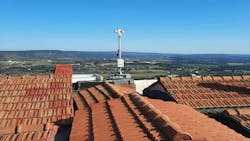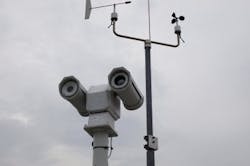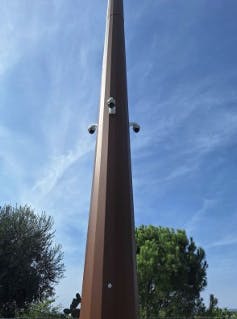FLIR Thermal Imaging Cameras Protect Woodland Heritage Along Puglia’s Ionian Arc
The Ionian Arc of Puglia, known for its rich history and scenic coasts, is steeped in both culture and very high wildfire risk.
The Apulia region hosts large numbers of tourists in the summer. Coupled with dry vegetation and climbing temperatures, the season demands close attention from officials looking to mitigate fire risks.
"Timely intervention is fundamental to protect the territory from fire risk," commented Pierpaolo Piracci, Regional Sales Manager for Italy, Greece, and South and Southeast Europe at Teledyne FLIR (FLIR Security/AIS). "We need to be able to identify the smallest outbreak well before flames develop, even before smoke is generated."
FLIR's thermal imaging technology was chosen to manage the fire detection process. After a previous successful deployment in Alta Murgia National Park, officials again utilized FLIR's Automatic Fire Detection and Alerting System to manage its fire detection operations.
The communication network and automated image processing system utilized by the technology were implemented by CAE, which served as the system integrator for the project.
How does it work?
The system, which uses the same basic technologies deployed in Alta Murgia, is designed to protect key woodland areas via FLIR's thermal imaging capabilities. CAE Early Fire Detection's cornerstone is FLIR's PT-Series dual-sensor thermal cameras, a combination thermal-visible light sensor pan-tilt camera that scans the area for abnormal heat signatures. Installed on elevated monitoring stations, the cameras offer a detection radius of 12 km, a 360-degree field of view, and continuous monitoring even in difficult environmental conditions.
The system can also send real-time alarms via automatic image processing and save video recordings. Additional security features prevent tampering with FLIR's sighting stations.
Deployment
The early fire detection system in the Ionian Arc of Apulia includes six lighting stations equipped with FLIR's thermal imaging cameras, monitoring approximately 2,000 square km of woodland.
Each station is connected to a central hub via fiber optics and microwave radio links. Information is funneled to this central hub, which automatically collects and analyzes it in real time to send fire alerts to the Apulia Civil Protection Operations Room if necessary.
"We had already collaborated successfully with Teledyne FLIR in the previous early fire detection project in the Alta Murgia National Park," says Luca Papandrea, Technical Director at CAE. "In this project as well, we provided a turnkey system. The challenge was to take care of all stages from design to implementation and, finally, maintenance. Decisions are made in order to maximize the quality, efficiency, and reliability of the systems, and the choice of suppliers is also guided by the same principles."


